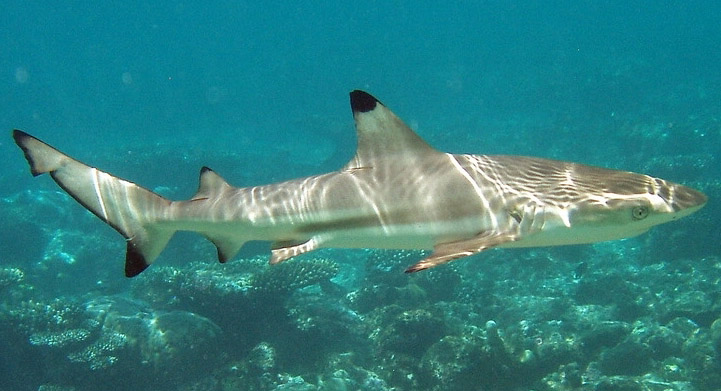Although sharks lack bones, their skeletons eventually fossilize. Instead of the common underlying support structure within many members of the animal kingdom, these magnificent creatures wield a cartilage skeleton to serve the same purpose as bones, as well as gifting sharks the ability to use this relatively light material to their advantage, in such a way to easily maneuver their bodies through the depths of the ocean to catch prey. One obvious difference from the two substances is that unlike bone, which contains calcium in the matrix, cartilage does not. Instead of calcium it contains high amounts of chondroitin, a material that gives cartilage its elasticity and flexibility. Modern sharks have prismatic calcified cartilage.
Shark teeth aren’t attached to gums, but are connected to the shark’s mouth by their own skin. Shark teeth are typically white in color, but as the tooth fossilizes over time, it turns a darker color such as tan, grey, or black. Whale sharks have a great abundancy of teeth, but not all of them are used for eating! In fact, researchers in Japan recently discovered that every whale shark has tiny teeth above its eyes to protect itself from predators. To tell the difference between a shark tooth and a seashell, hold it up to the sunlight. If it is a shell it will appear to have ripples and iridescence, while a majority of all shark teeth will look smooth and shiny.
The world has told us that sharks are are dangerous predators, but in reality 20 million sharks die because of human made causes for every 1 death of a shark! In fact, more people die from falling coconuts then sharks. When they do attack us it is because of curiosity or confusion between as and its prey. Only the top apex predators such as, Great White, Bull, and Tiger sharks are commonly known to attack humans (still rare occasions). According to the International Shark Attack File, between 1958 and 2016 there were 2785 confirmed shark attacks, with 439 of them proving to be fatal.
Of all of a shark’s senses, olfactory is arguably the most prominent. Their sense of smell has developed to be able to easily discover a drop of blood in a million drops of water. This method works by pulling water into its nasal cavities and sniffing for any prey. As the water enters the nasal cavities, it travels across folds of skin called olfactory lamellae, which are studded with chemoreceptors, smell sensitive structures that make it incredibly easier for the shark to sense prey. Its olfactory sense travels in the shape of an s and has a smell approximately 10,000 times better then the average human.
Sharks have the ability to sense small electronic pulses of marine animals, able to detect differences as small as a billionth of a volt(V). Salt in the ocean contains sodium and chlorine ions. Ions are particles that have an electrical charge because they have lost or gained an electron. In water, these ions move freely, transporting energy. A similar thing happens between living cells and salt water. Fish cells have a different electric charge from the water, so contact between the two items creates a weak voltage, in the same way as a household battery. On the rostral part of a shark’s head, tiny pores called the Ampullae of Lorenzini do this very thing.
The caudal fin provides the thrust needed to propel a shark through the water. The caudal peduncle is where the narrowing of the body meets the tail. All of the force generated by the shark’s muscles is brought to the tail via the caudal peduncle. Moderate swimmers such as the Blue shark and Tiger shark have a thickened head, thinner body, and a large caudal peduncle. A dorsal fin is on top of the shark and is used for balance, stability, and sudden turns. Pectoral fins are located behind the gill slits and act as a steering wheel and help the shark to maintain stability at high speeds.
The Dwarf Lantern shark is the smallest of its kind and was discovered by Steward Springer and George Burgess in 1964. They gave it the scientific name etmopterus perryi, after biologist Perry Gilbert. It has 32 teeth on its upper jaws and 34 teeth on its lower jaws. Females of this species tend to grow larger than males. Their lifespan ranges from 20 to 30 years and Dwarf Lantern shark’s diets consist of mainly krill, shrimp, and zooplankton. They usually grow to a maximum of 20 cm long, but world records state that one has grown to over twenty cm, at 21!
The name megalodon means “giant tooth”. These fearsome predators preferred to be close to shores. Their mouths were about ten feet wide. Scientists have never completed a skeleton and a megalodon’s physical appearance is still widely disputed. They belonged to the family of Otodontidae and ate about 2500 pounds of food every day, enough to sustain their large bodies. Almost all fossil records of megalodons are teeth, which were once believed to be fossilized tongues of dragons. Based on studies of their teeth, scientists have determined that the megalodon have the strongest bite force of any living animal, both past and present.

This image is courtesy of Good Free Photos.